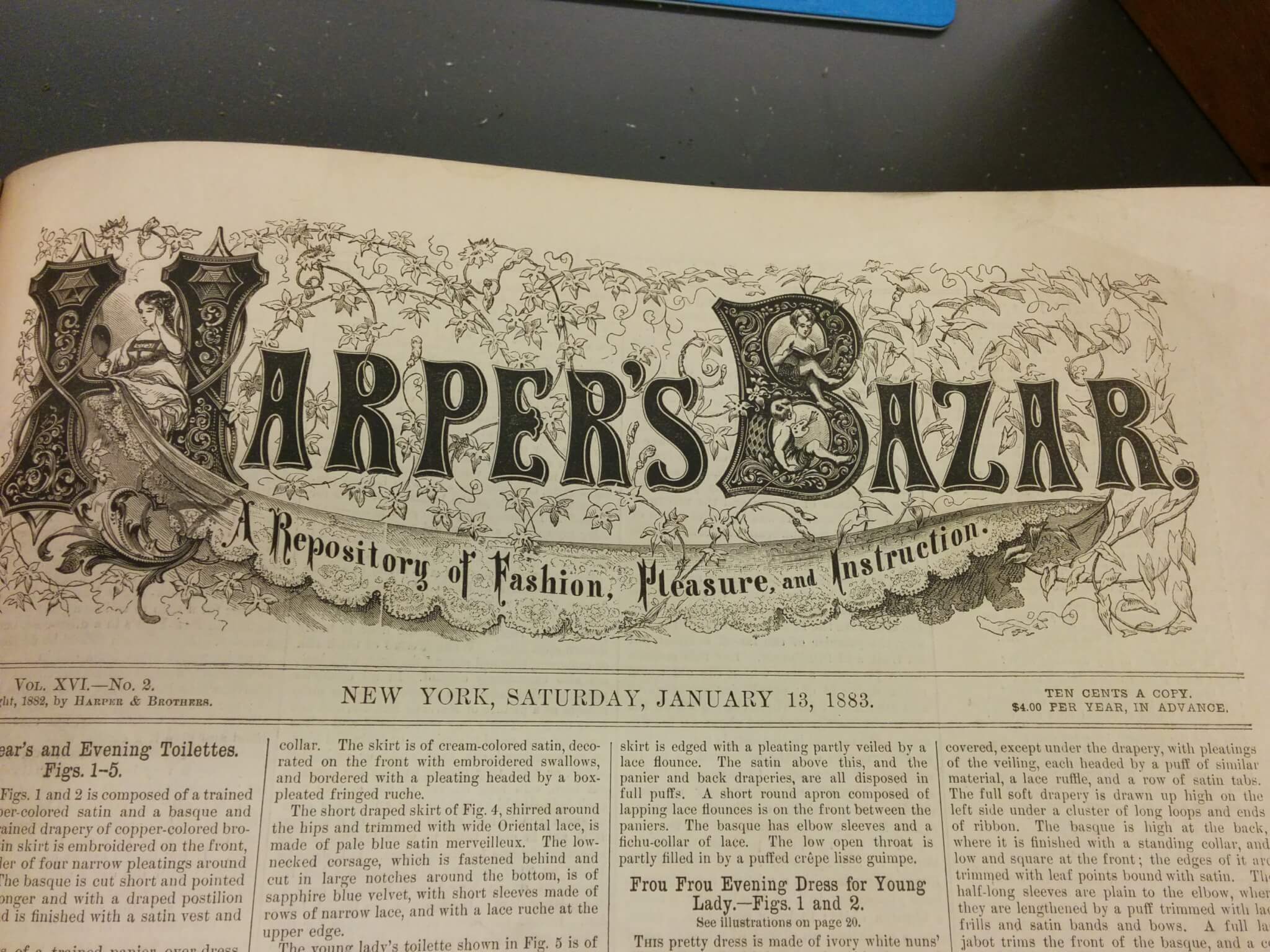There is no arguing the magnitude of the fashion and culture magazine Harper’s Bazaar. Sometimes it can be easy to forget how long this publication has been around, and how long it’s been shaping what is accepted as normal, good and beautiful. Founded in 1867 as “A repository of fashion, pleasure, and instruction” Harper’s Bazar (notice the single a) hit the ground running on bringing Paris fashion to an emerging leisure class in American society. The magazine, much like today, would feature articles on decor, travel destinations and the comings and goings of Kings, Queens and presidents. What’s different, of course, is in the details.
While one has multiple options of accessing HB today ( or here ) buying the periodical was one’s only option in the late 19th century. The world of mass printing was quickly changing, not quite at the pace we are used to, but new technologies made large runs of information more accessible than ever before. HB implemented these innovations as they became available, and although they are looked at as antiquated now, they are what I find most charming about the older runs.
Imagine a fashion magazine today without a single photograph! Writers would have to rely solely on their description, like this snippet from the article Paris Fashions:
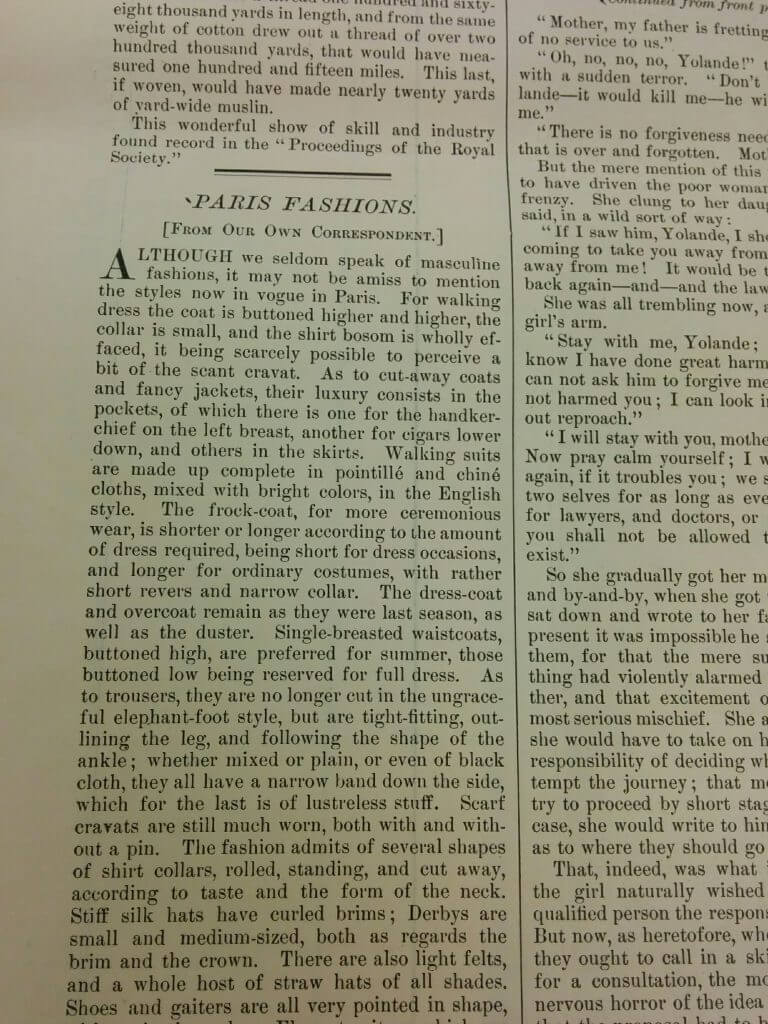
Another article about the latest way to dress your table with the right flowers:
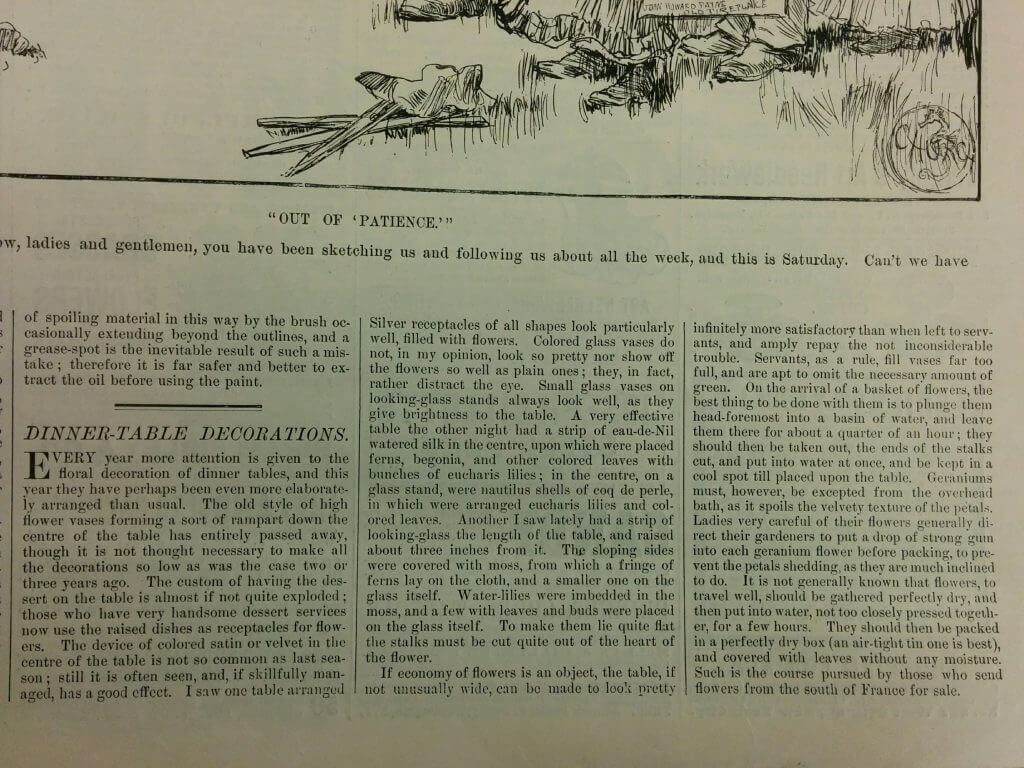
There are times when an image just had to do, however, which brings us to printmaking. Pre photography and post letterpress was of course, a great time to be in the printing business. Duplicates of original wood cuts (which were at times created from original paintings) would be sent and used as illustrations throughout the magazine. Each issue would have a variety of ruffled dresses and gowns for the young and older (and wiser) wearer:
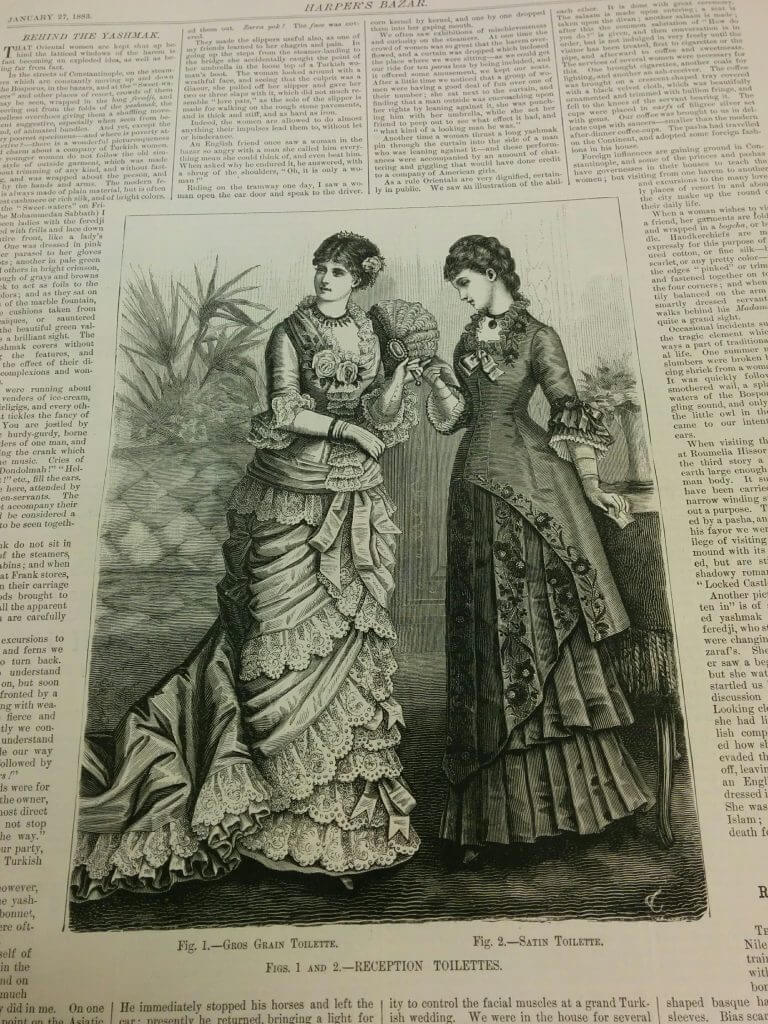
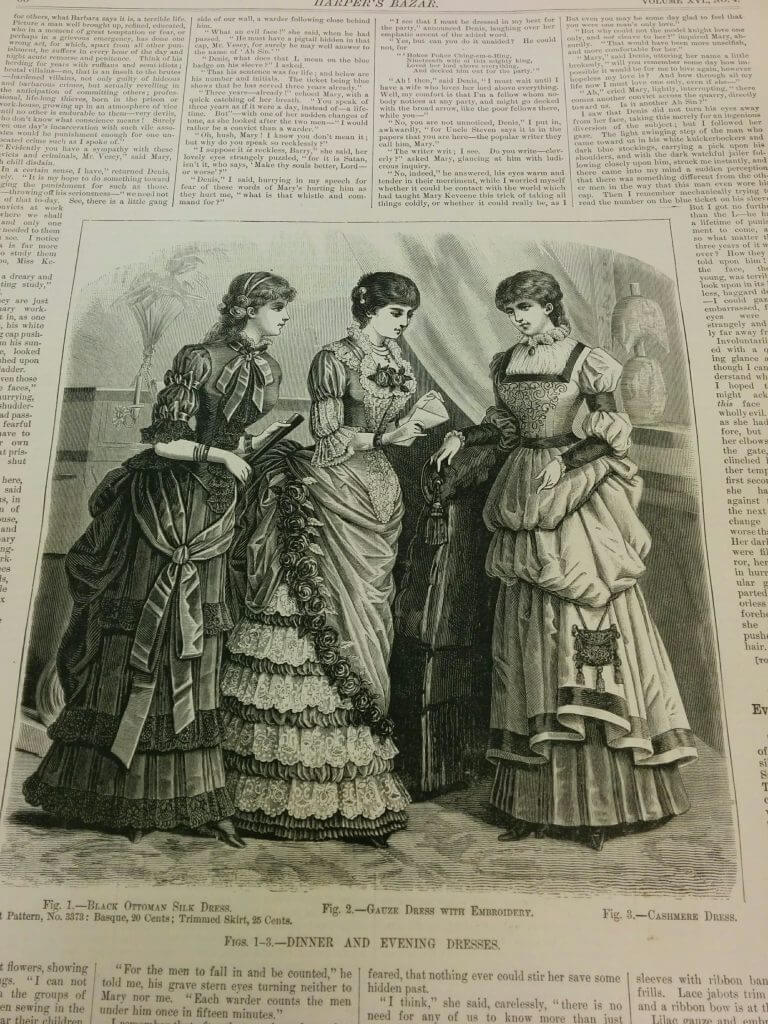
slightly different from that Rihanna photo shoot, although all things are cyclical, as they say.
Another slight change from Harper’s of the past to present are the tutorials included in issues:
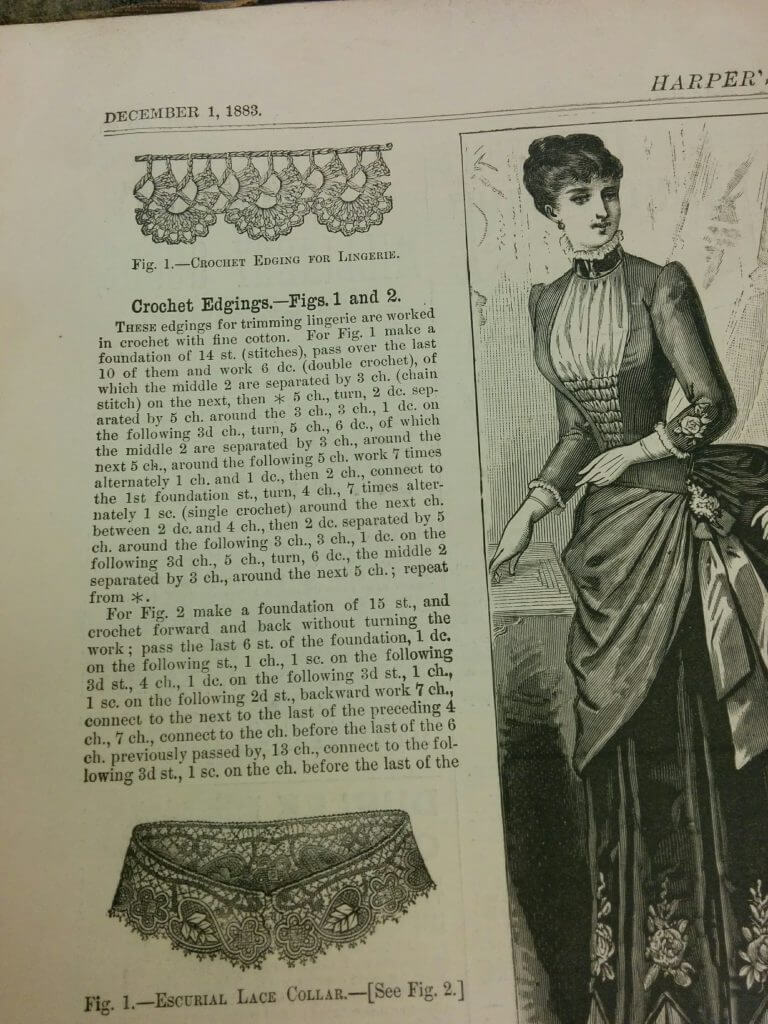
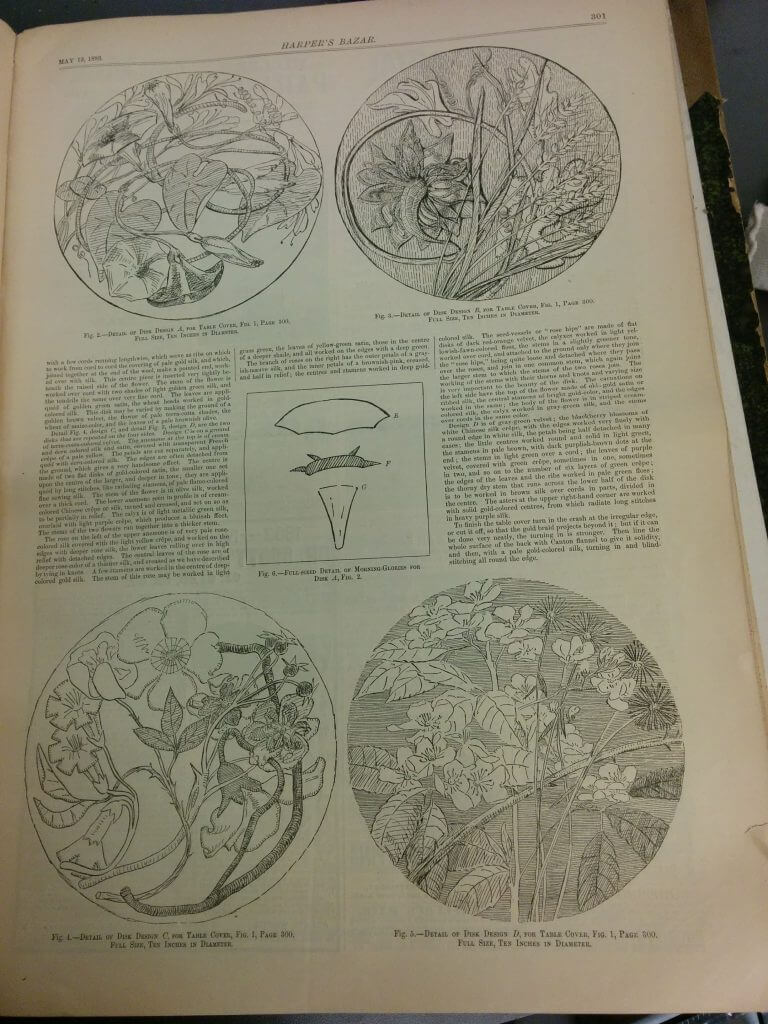
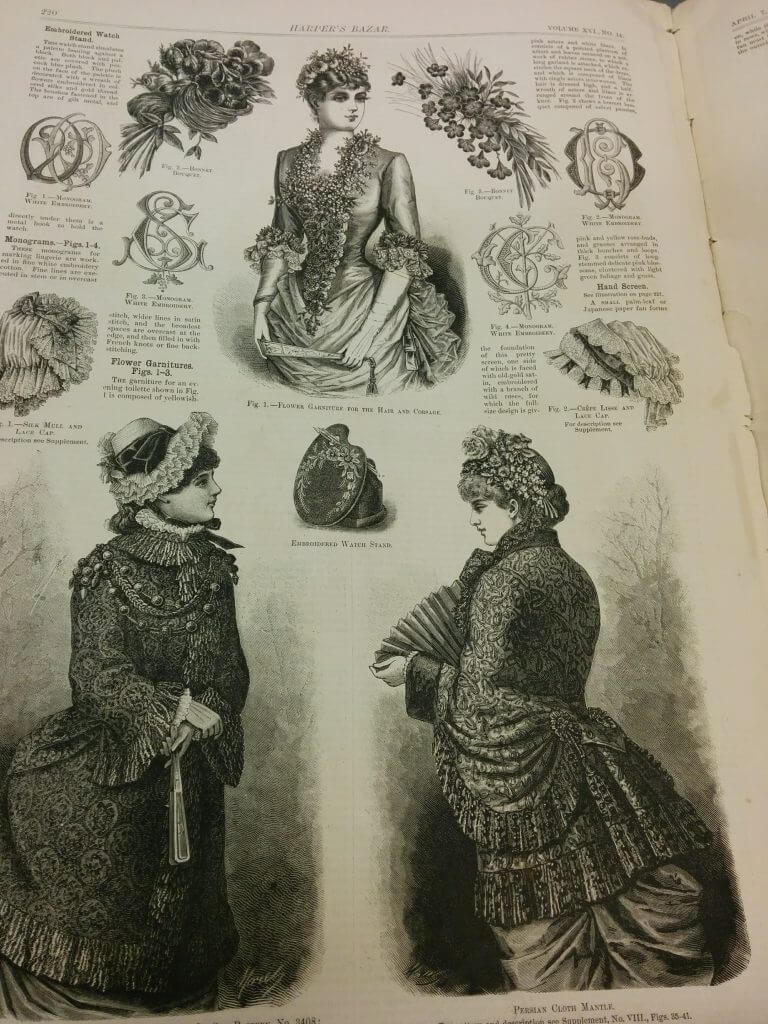
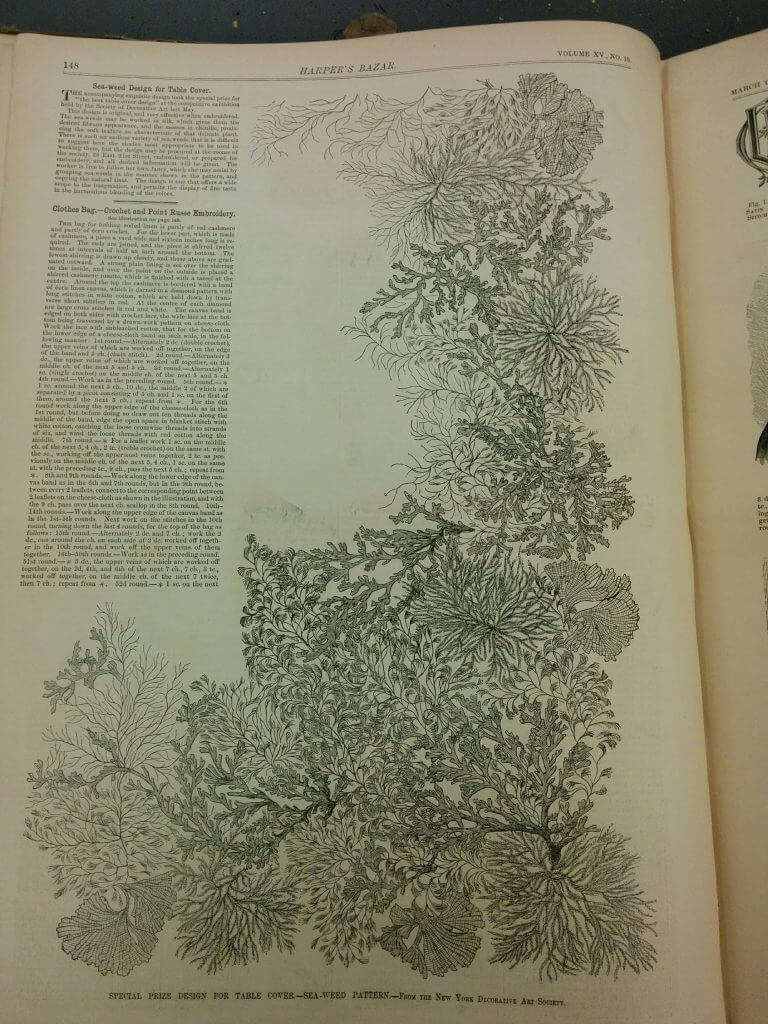
It seems these patterns are the original supplements found in the back of magazines of today. Instead of listing where one can buy those Gucci jeans or Tom Ford make-up, here was a pattern to make it on your own. I love that this high end fashon magazine had embroidery templates, table cloth patterns, and crochet stitch techniques. Of course, it dawns on me, people made more of their clothings and homewear when these magazines first came out. How quickly, one forgets, especially in this DIY Remake Learning atmosphere we live in today.
While we are cleaning and housing this incredible collection up in CP&A, it’s hard not to stop in wonder and awe at what is found in these editions. They range from the beautiful
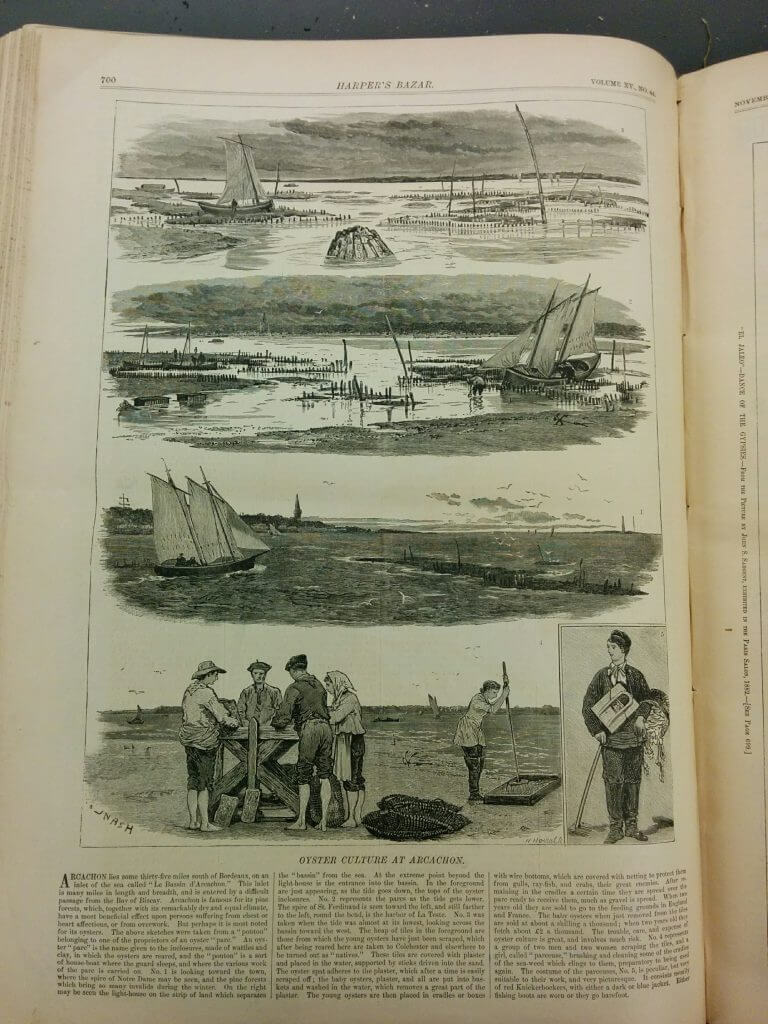
To the comic and strange (or shall I say, bizarre)
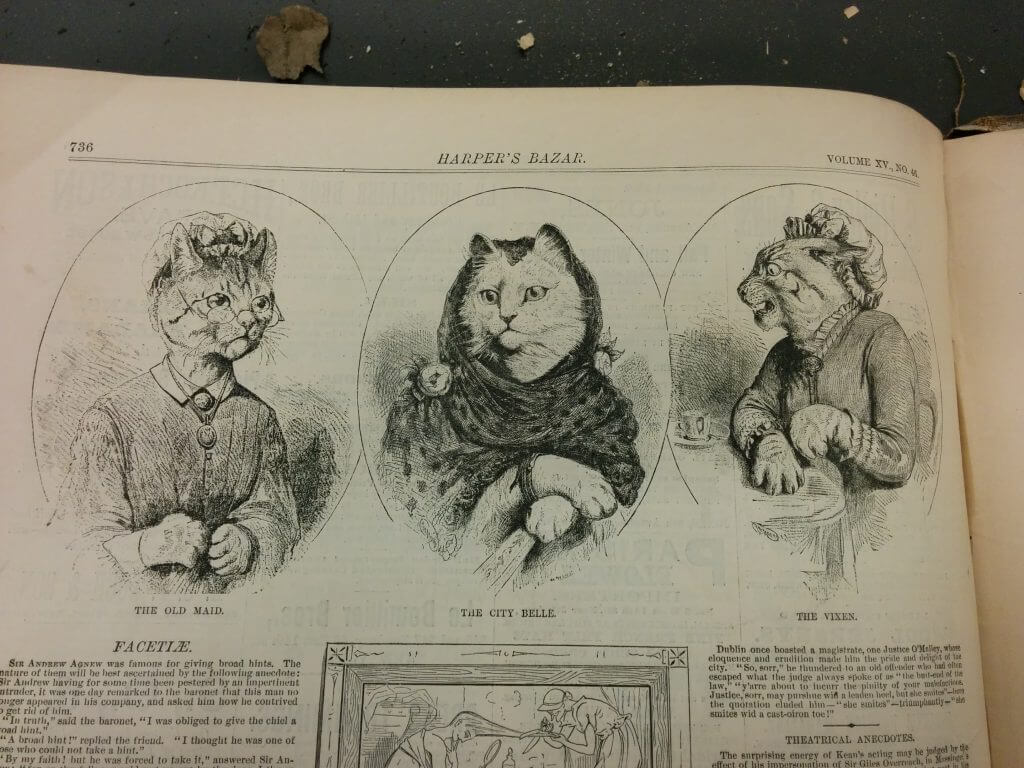
There are also parts of our history that can be harder to digest at times, which is also represented in Harper’s. They reflect the biases, racism and sexism that at the time was accepted. Again, this is a look into our past, what and who was deemed worthy. I believe seeing these reminders are important when we choose what we want our future to be like. How else can we learn and change if we don’t know where we came from?
At their core, these bound editions of Harper’s Bazar serve as a window into our collected past, good, fashionable, and ugly. I am proud to be a part of their preservation effort. In these times of information overload, sometimes we need to look back to find a better way forward. Come on down to CLP – Main Reference department and take a look for yourself. Be inspired to start a retro table runner from the source, or a 21st century revolution!
-Emma M.
Emma is a Conservation Assistant in the Conservation, Preservation and Access Department at CLP – Main. She earned a BFA in Book Arts in 2006 and has been taking books apart and putting them back together ever since.

